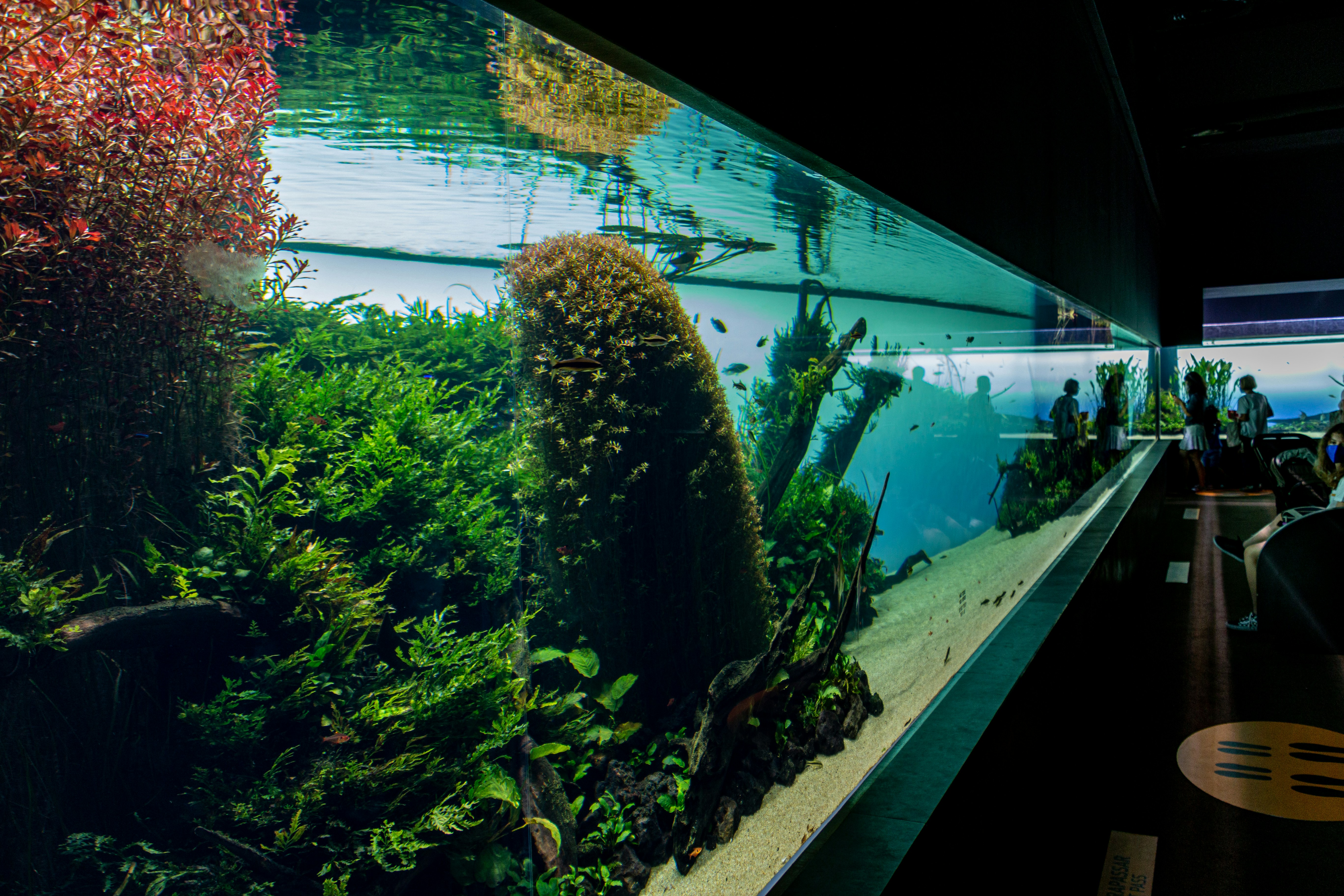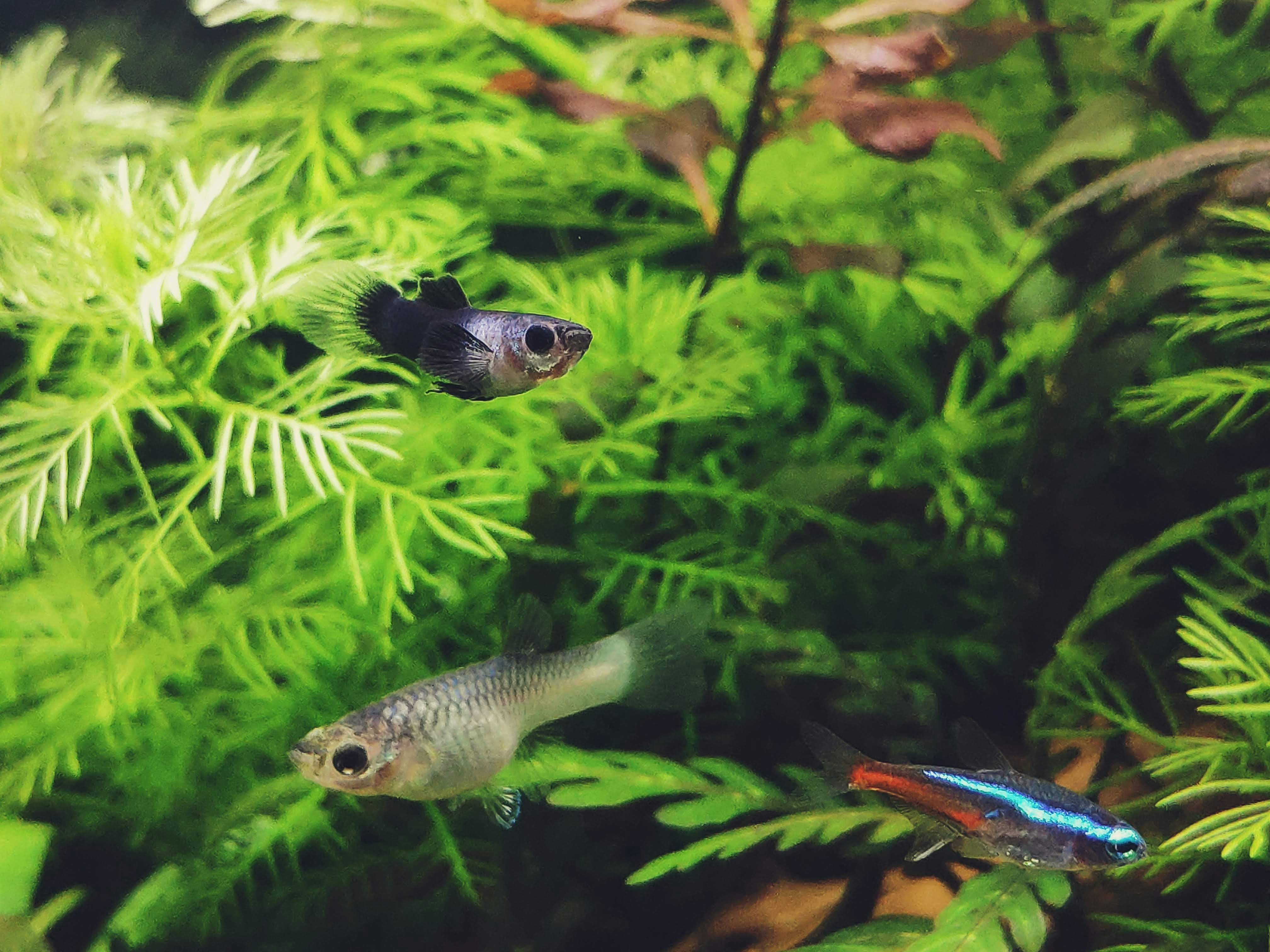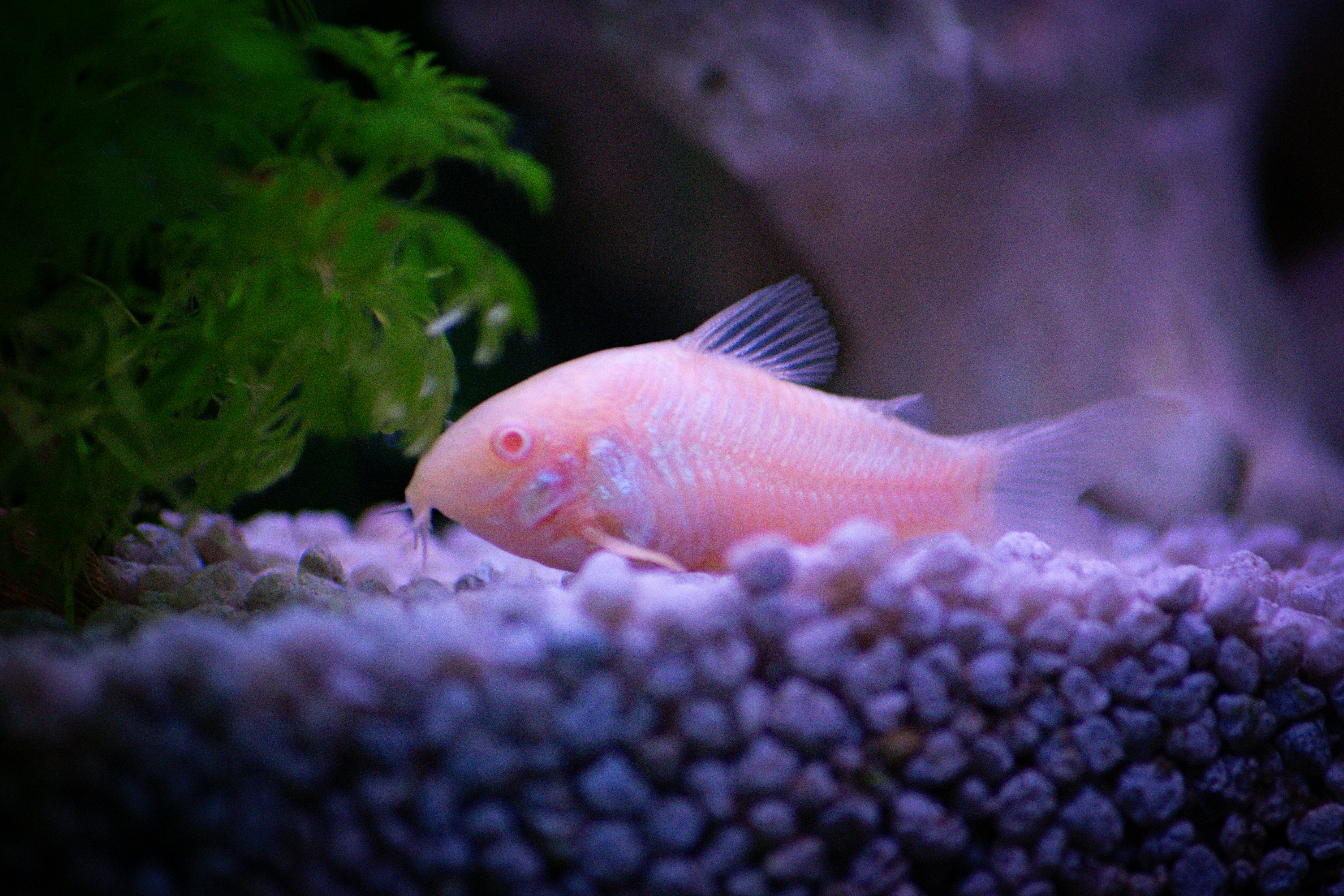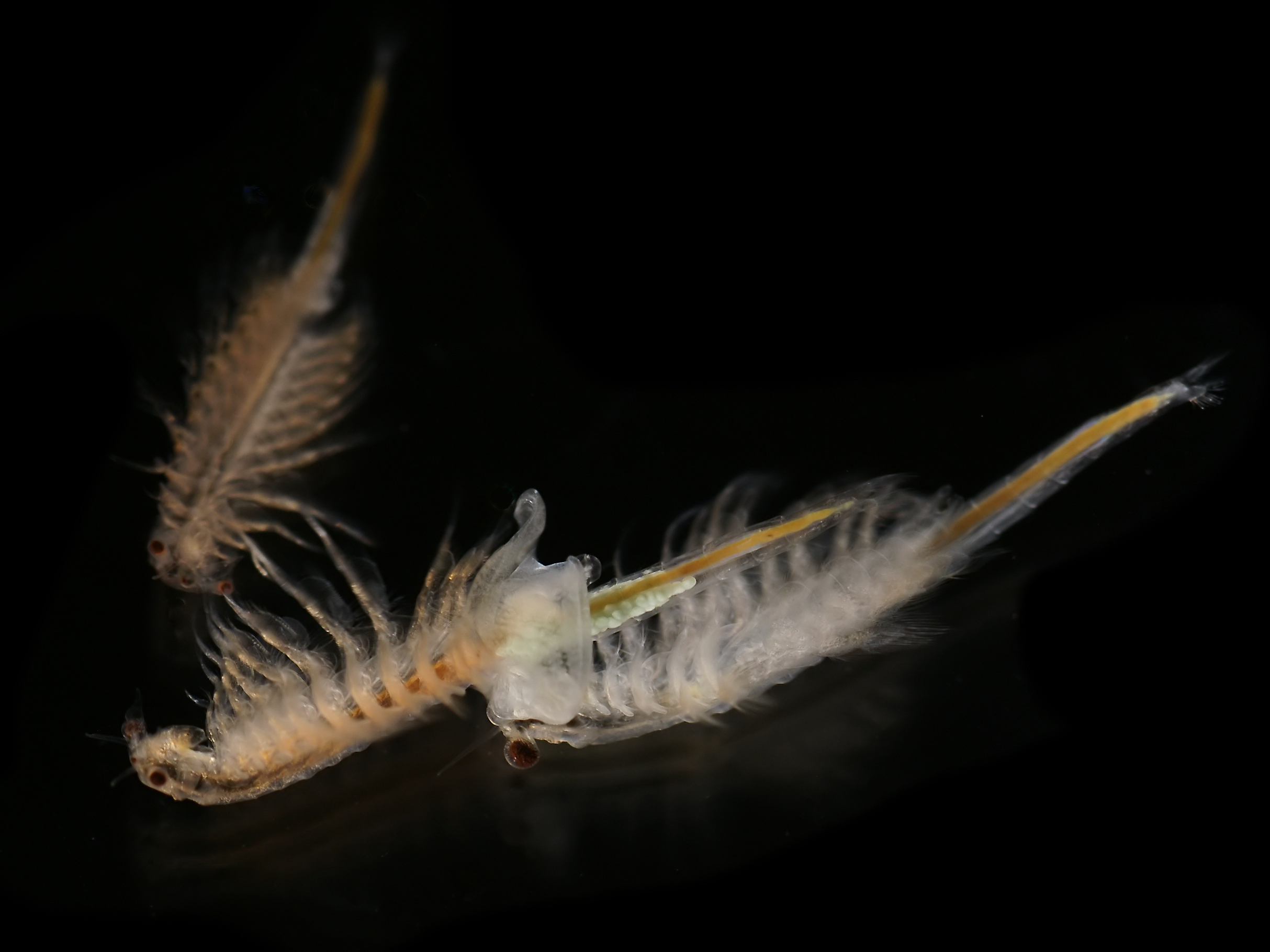
Complete Guide to Setting Up a Planted Aquarium: From Beginner to Expert
Setting up a planted aquarium transforms your fish tank into a thriving underwater ecosystem. This comprehensive guide covers everything from choosing the right aquarium substrate for plants to maintaining healthy aquatic plants long-term.
Why Choose a Planted Aquarium?
Planted aquariums offer numerous benefits beyond aesthetic appeal:
- Natural filtration: Live plants absorb harmful nitrates and ammonia
- Oxygen production: Plants produce oxygen during photosynthesis
- Fish health: Natural environment reduces stress and promotes natural behaviors
- Algae control: Plants compete with algae for nutrients
- Breeding stimulation: Many fish breed more readily in planted environments
Essential Equipment for Planted Aquariums
Success with live aquarium plants requires specific equipment:
Lighting Requirements
Proper lighting is crucial for aquarium plant growth:
- Low-tech plants: 20-30 PAR (moderate LED lighting)
- High-tech carpeting plants: 50+ PAR (high-intensity LED)
- Duration: 6-8 hours for low-tech, 8-10 hours for high-tech
- Spectrum: Full spectrum LEDs with peaks in red and blue
CO2 Systems
Carbon dioxide supplementation dramatically improves plant growth:
- Pressurized CO2: Most effective for demanding plants
- Liquid carbon: Alternative for low-tech setups
- DIY CO2: Budget option using yeast and sugar
- Target level: 20-30 ppm for optimal growth
Choosing the Right Aquarium Substrate for Plants
The foundation of any planted tank is quality substrate that supports root growth:
Aquarium Plant Substrate Options
- Aquasoil (Recommended): ADA Aquasoil, Fluval Stratum, or similar nutrient-rich substrates
- Gravel capped soil: Organic potting soil capped with aquarium gravel
- Sand substrate: Fine sand works for some plants but may need root tabs
- Specialized substrates: Eco-Complete, CaribSea Eco-Plant, Seachem Flourite
Aquarium Gravel for Plants
If using aquarium gravel for plants, consider these tips:
- Choose neutral-colored, small-grained gravel (2-3mm)
- Use root tabs to provide nutrients directly to plant roots
- Consider mixing with specialized plant substrate
- Ensure gravel depth of 2-3 inches for proper rooting
How to Grow Live Plants in Aquarium: Step-by-Step Setup
Step 1: Planning Your Layout
Before adding water, plan your aquascaping design:
- Sketch your layout or use aquascaping apps
- Plan for foreground, midground, and background plants
- Consider fish swimming space and equipment placement
- Use the rule of thirds for aesthetic appeal
Step 2: Installing Equipment
Install all equipment before adding substrate:
- Position filter intakes and outputs
- Install heater and thermometer
- Set up CO2 diffuser (if using)
- Mount lighting system
Step 3: Adding Substrate
Create depth and interest with substrate placement:
- Slope substrate higher in back (2-4 inches) than front (1-2 inches)
- Create hills and valleys for visual interest
- Use hardscape to retain substrate slopes
- Rinse substrate if necessary (aquasoil usually doesn't need rinsing)
Step 4: Adding Hardscape
Position rocks and driftwood before plants:
- Use odd numbers of stones for natural appearance
- Bury 1/3 of rocks for stability
- Soak driftwood to remove tannins (if desired)
- Create focal points and pathways
Step 5: How to Plant Live Plants in Aquarium
Plant from background to foreground for best results:
Background Plants (Stem Plants)
- Remove any dead or damaged leaves
- Trim stems to desired length
- Plant in groups of 3-5 stems
- Popular choices: Rotala, Ludwigia, Cabomba, Bacopa
Midground Plants
- Position around hardscape elements
- Good choices: Cryptocoryne, smaller Echinodorus, Anubias
- Don't bury rhizomes of Anubias or Java Fern
- Use fishing line to attach epiphyte plants to hardscape
Foreground Plants (Carpeting Plants)
- Plant small portions 1-2 inches apart
- Popular carpeting plants: Monte Carlo, Dwarf Baby Tears, Dwarf Hairgrass
- Use tweezers for precise placement
- Mist plants while planting to prevent drying
Step 6: Filling the Tank
Add water carefully to avoid disturbing your layout:
- Place a plate or bag on substrate to disperse water
- Fill slowly with dechlorinated water
- Use a spray bottle to mist exposed plants
- Expect some cloudiness initially
Easy Aquarium Plants for Beginners
Start with these hardy plants that grow well in most conditions:
Low-Light Plants
- Java Fern: Attach to driftwood or rocks
- Anubias varieties: Slow-growing, nearly indestructible
- Java Moss: Great for carpeting or attaching to surfaces
- Cryptocoryne: Beautiful rosette plants in many varieties
- Amazon Sword: Classic background plant
Moderate Light Plants
- Vallisneria: Tall background grass
- Hygrophila: Fast-growing stem plant
- Bacopa: White flowers and round leaves
- Wisteria: Delicate, lacy foliage
How to Keep Live Plants in an Aquarium: Maintenance
Daily Care
- Check CO2 levels (if using)
- Monitor plant health and remove dead leaves
- Observe fish for signs of stress
Weekly Maintenance
- Perform 25-50% water changes
- Dose liquid fertilizers according to schedule
- Trim fast-growing stem plants
- Test key water parameters
- Clean glass and remove excess algae
Monthly Tasks
- Deep clean substrate in open areas
- Replace or refresh root tabs
- Prune and reshape plants as needed
- Replace filter media as necessary
- Check and clean equipment
Fertilization for Planted Aquariums
Plants need macro and micronutrients for healthy growth:
Macronutrients
- Nitrogen (N): Essential for growth, often from fish waste
- Phosphorus (P): Important for root development
- Potassium (K): Crucial for overall plant health
Micronutrients
- Iron (Fe): Essential for chlorophyll production
- Trace elements: Magnesium, calcium, boron, manganese
Fertilizer Options
- All-in-one liquid fertilizers: Convenient for beginners
- Dry fertilizers: More economical for larger tanks
- Root tabs: Slow-release fertilizers for heavy root feeders
- Osmocote plus: DIY root tabs option
Common Problems and Solutions
Algae Issues
- Green algae: Reduce lighting period or intensity
- Brown algae: Common in new tanks, usually resolves naturally
- Black beard algae: Increase CO2, improve flow, spot treat with Excel
- Blue-green algae: Improve flow, reduce organics, manual removal
Plant Problems
- Yellowing leaves: Often nitrogen deficiency or adaptation
- Holes in leaves: Usually potassium deficiency
- Slow growth: Check lighting, CO2, and fertilization
- Melting plants: Normal adaptation process for new plants
Choosing Compatible Fish
Select fish that complement your planted aquarium:
Plant-Friendly Fish
- Tetras: Small schooling fish that enhance the natural look
- Corydoras: Bottom dwellers that won't damage plants
- Gouramis: Peaceful and beautiful in planted tanks
- Rasboras: Active schoolers perfect for planted communities
Fish to Avoid
- Large cichlids that dig and uproot plants
- Silver dollars and other plant-eating species
- Large plecos that may damage delicate plants
- Goldfish in tropical planted tanks
Finding Local Aquarium Stores for Plant Supplies
Visit local tropical fish stores near you to find:
- Quality live aquarium plants
- Specialized planted tank equipment
- Expert advice from experienced staff
- Local aquascaping communities
- Plant-specific fertilizers and substrates
Many aquarium stores near you carry tissue culture plants, which are pest-free and often healthier than traditional potted plants.
Advanced Techniques
Dry Start Method
For carpeting plants, consider the dry start method:
- Plant carpet plants in moist substrate
- Cover tank with plastic wrap
- Maintain high humidity for 4-6 weeks
- Gradually fill tank once carpet establishes
Aquascaping Styles
- Nature Aquarium: Asymmetrical layouts mimicking nature
- Dutch Style: Structured plant arrangements with clear paths
- Iwagumi: Minimalist rock-focused designs
- Jungle Style: Dense, wild-looking plant arrangements
Setting up a planted aquarium is a rewarding journey that creates a beautiful, natural environment for your fish. Start with easy plants and basic equipment, then gradually upgrade as you gain experience. Remember that patience is key—planted tanks take time to mature, but the results are worth the wait.
For supplies and expert advice, visit your local aquarium stores to see live plants in person and get recommendations based on your specific setup and goals.


